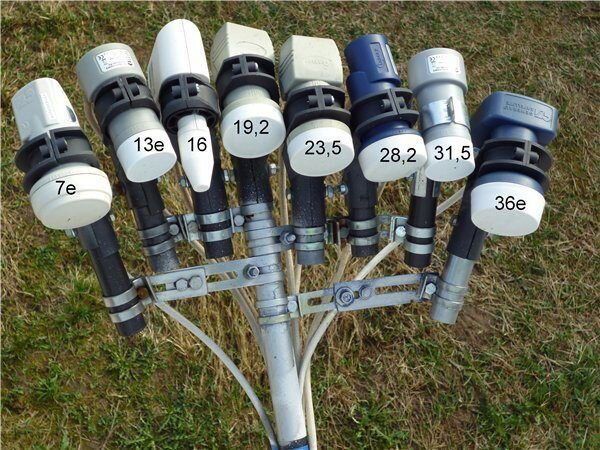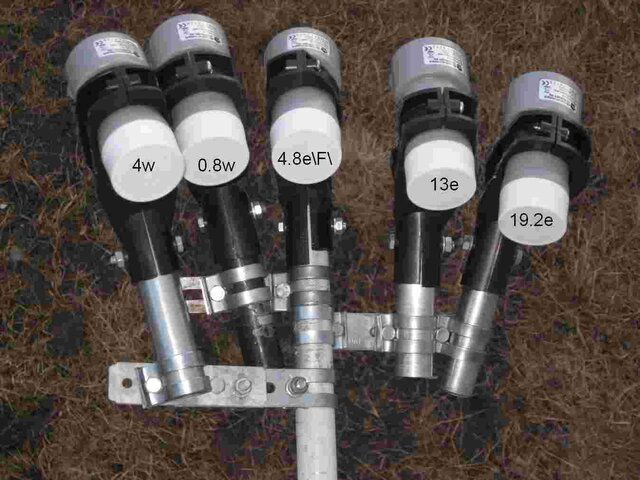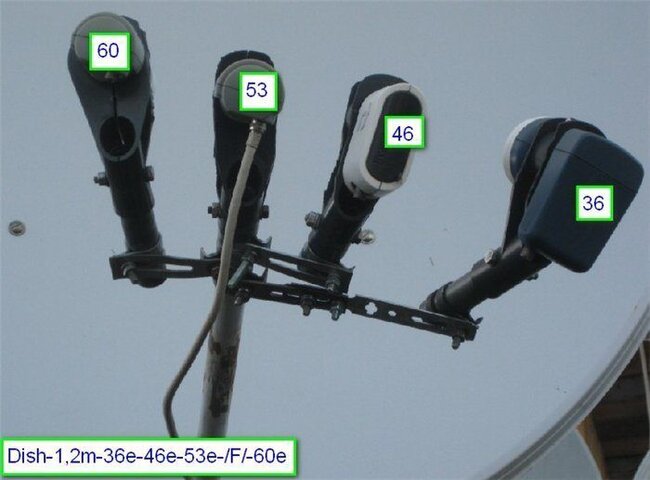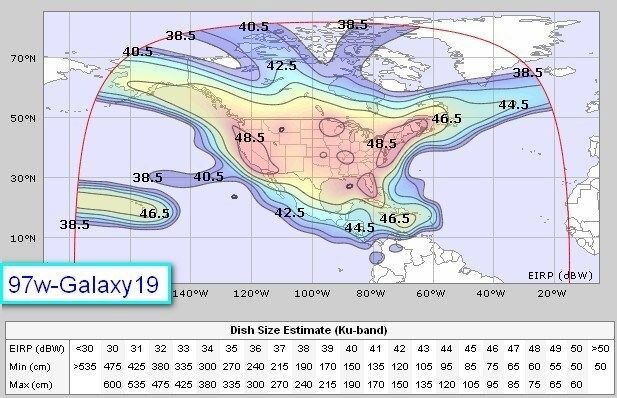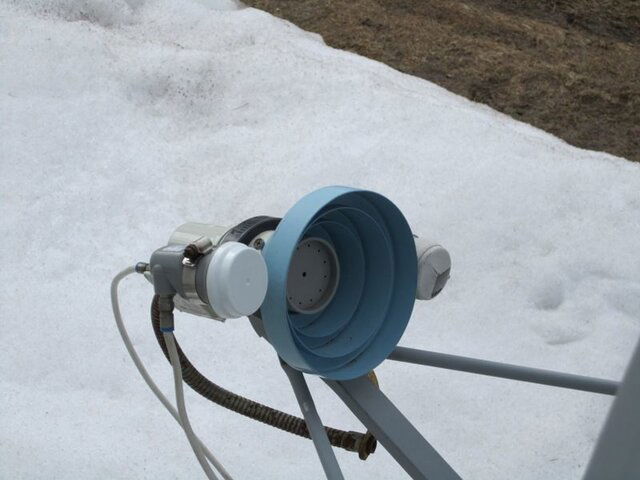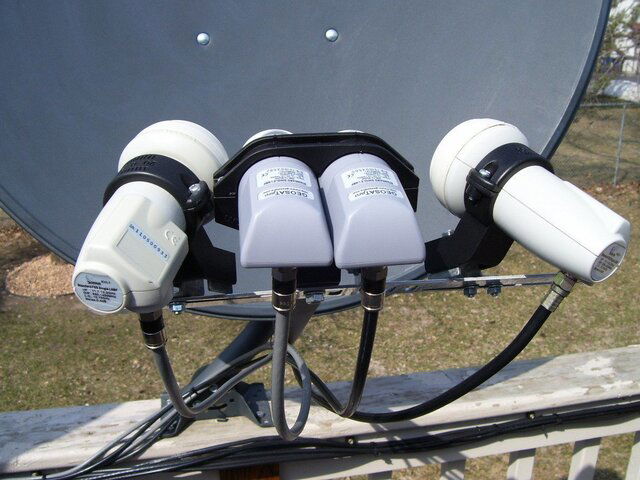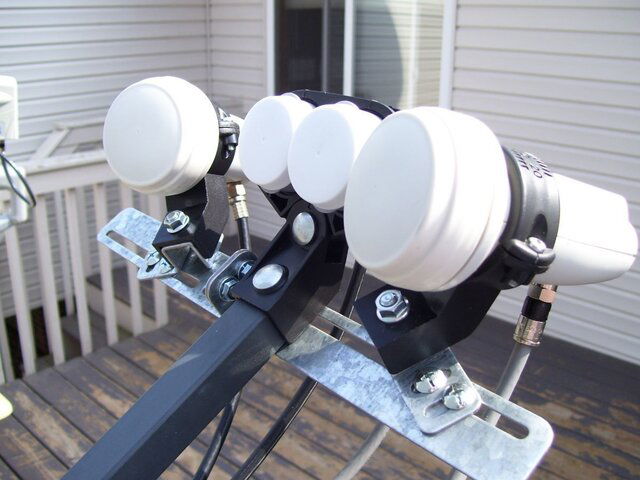I'd experiment also. First by aiming the dish directly at 125W and recording my Q readings. Then aim it at 113 or 111, then try to get 125 with an offset LNBF. The cost of it is only a bracket, switch, and LNBF.
Just don't know if a 90cm dish is enough as performance will 'fall off' with the offset feeds. So the performance is comparable to what? A 70cm? I get squat, "0", on 125w with a 70cm aimed at it. That is what concerns me with the espectation of success. But the 84e works very well 'boresighted'**. The maps above show that 125W is some ~8db weaker than 97W. That's quite a 'bit' I feel. The only solution, I see, is at least a 1.2 meter with offset lnbf's. If determined to go that 'route'. But 1.2m dishes are $$$(with shipping)***.
One can try the offset route, and see if it will work. Part of the hobby I'd say. If not there are alternatives.
Putting up a second 90cm dish*, or adding a motor, are 'cost effective' solutions. IMHO
Think everyone here uses either a dedicated or motorized dish, 90cm or larger, for 125W as it's all DVB-S2 also. (Needs more signal to lock on to)
* or the 90cm aimed at 125 and a 70-75cm aimed at 97W.
**Montana is a bit low, 50 -60 Q, and breaks up a bit. The others are Q70+
*** Unless you locate one that's available for little or nothing locally.
All in all, 'go for it' with an offset lnbf, I'm just over thinking 'out loud' my thoughts, and 'go from there'.
On another topic: God man, aren't you worried about starting fires with those eirp values?
http://www.satstar.net/beams/astra4a_eurb.html http://www.satstar.net/beams/amos3_eurh.html
Average ~10db stronger than anything this side of the pond. That's big time strong. just put a lnbf on a funnel??
The DBS satellites spot beams may be that 'hot' here, but not FTA, and they can be had with a 50cm dish.



